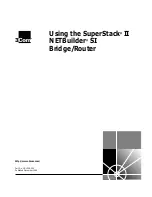
47-7
Catalyst 6500 Series Switch Software Configuration Guide—Release 8.7
OL-8978-04
Chapter 47 Configuring SNMP
Understanding How SNMPv3 Works
Understanding How SNMPv3 Works
SNMPv3 contains all the functionality of SNMPv1 and SNMPv2c, but SNMPv3 has significant
enhancements to administration and security. SNMPv3 is an interoperable standards-based protocol that
provides secure access to the devices by authenticating and encrypting the packets over the network. The
security features that are provided in SNMPv3 are as follows:
•
Message integrity—Collects data securely without being tampered with or corrupted
•
Authentication—Determines that the message is from a valid source
•
Encryption—Scrambles the contents of a packet to prevent it from being seen by an unauthorized
source
SNMP Entity
Unlike SNMPv1 and SNMPv2c, in SNMPv3 the concept of
SNMP Agents
and
SNMP Managers
no
longer apply. These concepts have been combined into an
SNMP entity
. An SNMP entity consists of an
SNMP engine and SNMP applications. An SNMP engine consists of the following four components:
•
Dispatcher
•
Message processing subsystem
•
Security subsystem
•
Access control subsystem
Figure 47-1
shows an SNMP entity.
Dispatcher
The dispatcher is a traffic manager that sends and receives the messages. After receiving a message, the
dispatcher tries to determine the version number of the message and then passes the message to the
appropriate message processing model. The dispatcher is also responsible for dispatching the protocol
data units (PDUs) to the applications and for selecting the appropriate transports for sending the
messages.
















































